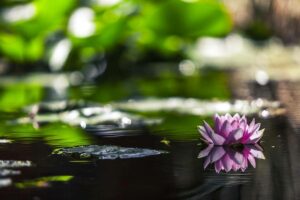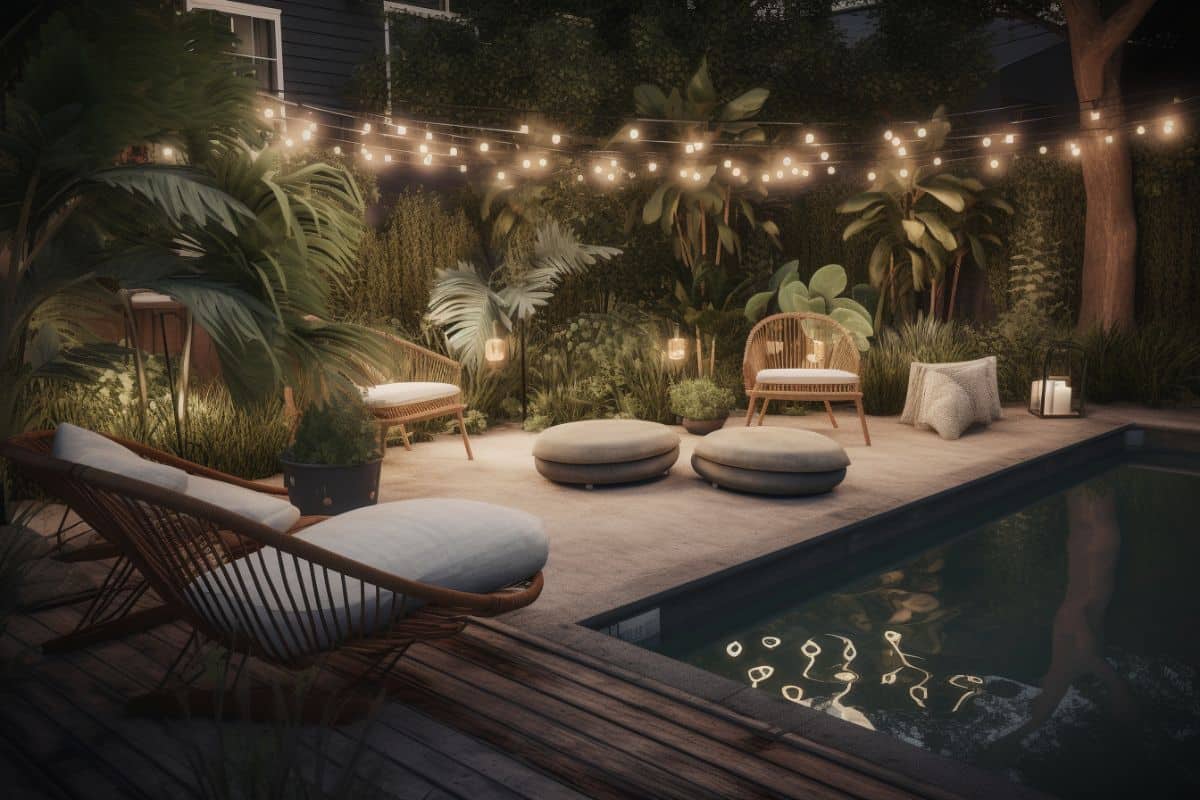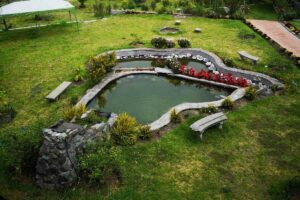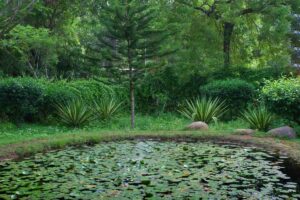Do you have a pond or aquarium? If so, then you may be interested in aquatic compost!
Aquatic compost is a special type of soil that is designed to anchor plants to the bottom of ponds or aquariums and be safe for fish.
In this post, we teach you everything you need to know about aquatic compost: what it is, how to use it, if it’s safe for fish, and alternatives you can use.
What is Aquatic Compost
Contrary to the name, organic compost has very little to do with decaying organic matter. Aquatic compost is the name given to a specially made soil that is designed to anchor plants to the bottom of a pond or aquarium.
It serves the same function as regular garden soil; providing stability and nutrients to plants, except it is made specifically for plants grown underwater.
How Is Aquatic Compost Different Than Garden Soil
There are two main ways in which aquatic compost differs from regular garden soil.
- Aquatic compost is much heavier than garden soil. It needs to be heavy so it stays at the bottom of the pond or aquarium, whereas regular soil would float and mix with the water creating a murky brown mess.
- An extremely slow-release fertilizer is used. When released slowly, it poses no harm to fish and it doesn’t alter the pH of the water.
Is Aquatic Compost Safe For Fish?
Yes, aquatic compost is safe for fish. By adding aquatic compost to your aquarium or pond, you are giving your fish a more natural environment. They aren’t used to living somewhere with a glass or tarp floor!
The bigger question now is why wouldn’t regular soil be safe for fish?
Regular garden soil is not safe for fish because it contains nutrients that can be harmful to them. The soil can also change the pH of the water, making it difficult for the fish to survive.
Aquatic compost is specifically designed for use in aquatic ecosystems, so it is safe for fish and other aquatic creatures. It contains no harmful nutrients and has a neutral pH, making it the perfect choice for fish tanks and ponds.
Can I use Aquatic Compost as a Substrate?
Yes, you can use aquatic compost as a substrate because it is a gardening substrate. A gardening substrate is a material that is used as the base layer in a garden.
It is usually made of soil, but can also be made of sand, compost, or other materials.
If you’re wondering if aquatic compost can be used as a substrate in regular gardens or potted plants, the answer is you can, but you shouldn’t.
Aquatic compost gets its weight from clay, which is a very heavy and very dense type of soil. One of the downsides to planting anything in clay soil is that water doesn’t easily drain.
Clay’s natural qualities can clog gutters and sewer drains, causing significant damage to infrastructure during rainfall events. Clay soil also inhibits plant roots from penetrating into the ground, preventing them from acquiring nutrients or making efficient use of water.
Lastly, clay soils are typically already nutrient deficient, or have nutrient deficiency issues, meaning any time you add fertilizer it would be wasted without the surrounding environment having enough microorganisms to break down portions of it.
Although most plants prefer well-draining soil with rich organic matter content, there are trees and shrubs that can tolerate “heavy” or poorly draining soils because they naturally handle excess moisture better than other plants.
For these types of plants, adding organic matter to the clay soil will help improve drainage and make nutrients more available to them.
If you have a plant that is not tolerant of wet soils, it’s best to avoid planting in clayey areas or amend the soil with compost before planting.
Doing so will give your plant the best chance for success and reduce the chances of having to replant because of poor growing conditions.
Is Aquatic Compost Acidic?
Aquatic compost is not acidic and has a very neutral pH. It makes sense when you think about why it should be neutral.
Regular garden soil varies in acidity; there are some acidic soils and some alkaline soils. In a single backyard, you can have different garden beds and soils with different acidity in each one.
In an underwater ecosystem, a balance for all the living things takes precedence over adding nutrients just for the plants.
When you plant in water, everything is sharing the same space; plants, water, fish, and microorganisms.
If the acidity in aquatic compost is raised or lowered, that’s not only going to affect the plants, but also the quality of the water, and the livelihood of the fish.
How Much Does Aquatic Compost Cost?
Aquatic compost varies in price. There are 10lbs bags you can buy for $10 up to $40.
If you were to add aquatic compost to a 5-gallon aquarium, you would need at least a two-inch layer of the substrate to properly anchor the roots to the bottom.
A 10lbs bag of aquatic compost will be enough to do approximately three 5-gallon aquariums.
Putting down substrate for something much larger like a pond is going to be much more expensive as you’ll need to cover a larger area.
Here’s a selection of suitable soils
Aquatic Compost Alternatives
If you don’t like the look of aquatic compost, or maybe you just don’t like the look of it, there are other options you can use.
Gravel
Gravel is a type of rock that is used for a variety of purposes, including construction, landscaping, and aquariums.
It is a popular choice for aquariums because it is hard, durable, and relatively inexpensive. Gravel also has the added benefit of being easy to clean and maintain.
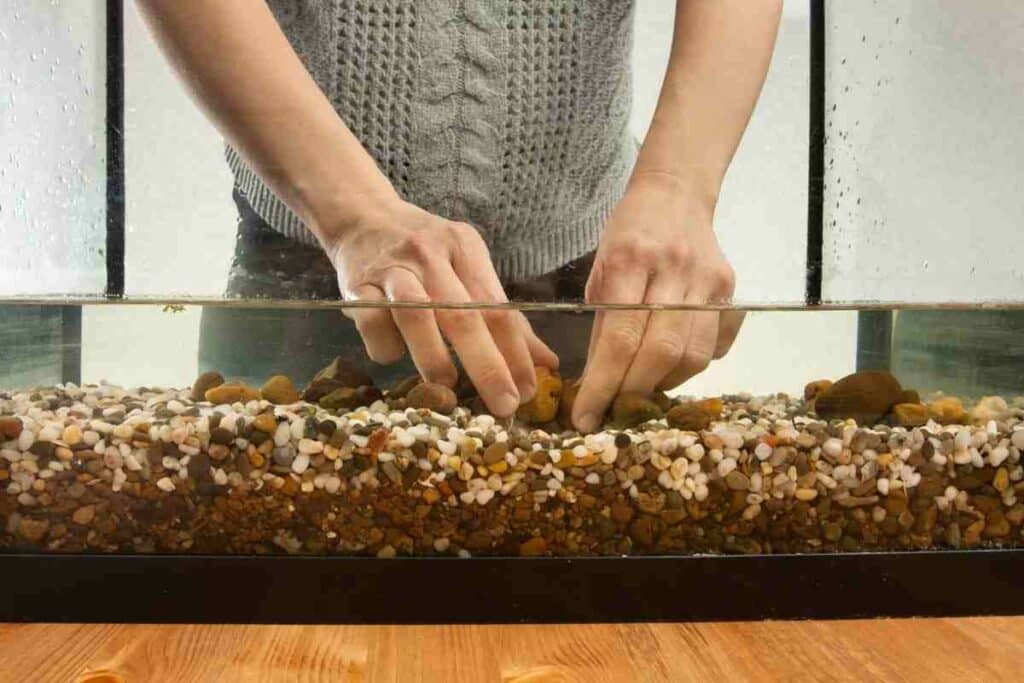
Gravel will anchor plant roots without compromising acidity, nutrients, or quality of water.
You’ll need to choose the correct gravel size 2-3mm is perfect fro growing plants. Too course and the roots will not take hold.
Kitty Litter
Kitty litter is made of a variety of materials, but the most common type is made of clay. It is normally used to absorb liquid waste from cats, but it can also be used as a substrate for aquatic plants.
When kitty litter gets wet, it will clump together which not only means it anchors plant roots extremely well, but it also keeps excess kitty litter from floating to the surface.
Please, always test first before adding to the aquarium or pond! Not all kitty litter is suitable for live
Horticultural Grit
Horticultural grit is a material used in gardening to help provide the plant with an anchor, support for its roots, and protection against pests.
It can be made of different materials but most commonly consists of sand, ground limestone, or oyster shell flour. Horticultural grit is available online and in many garden centers.
DIY Aquatic Compost
You can also make your own aquatic compost using soil from your backyard. This is the easiest and most cost-effective way to add a layer of the substrate to an aquarium or pond.
Soil is still pretty light, so DIY aquatic compost will need a thin layer of gravel or sand to keep the soil in place, but it will still be cheaper than using just gravel or just sand as a substrate.
How to Make Aquatic Compost
Aquatic compost can be expensive if you need to buy it in bulk. Instead of buying aquatic compost, you can make your own in a few easy steps.
You’ll first need to gather your tools. You will need:
- A shovel
- A bucket
- A sieve or sifter
- A baking tray (or two)
- Gravel or sand
Step 1
Using a shovel, dig up some dirt from your garden or lawn.
If you would rather purchase a cheap bag of soil, choose a bag without peat that is labeled as organic.
Step 2
Remove rocks, sticks, bugs, and debris from the soil by sifting it. You’ll need to sift enough soil to create a two-inch layer on the bottom of your pond or aquarium.
For a 5-gallon tank, you’ll need to sift approximately 4 liters of soil to create a two-inch layer.
Step 3
Take your sifted soil and spread a thin layer on a baking sheet. Bake the soil at 20 degrees Fahrenheit for 30 minutes.
Baking the soil will kill any bacteria or microorganisms that you aren’t going to want in your aquarium or pond.
Step 4
Once your soil has been baked and cooled, place it on the bottom of an empty aquarium or pond, and even it out.
Add your plants to the soil at this point.
Step 5
Since this is still just soil, it is going to be much lighter than an actual aquatic compost.
To stop the soil from floating or mixing in the water, add a thin layer of gravel or sand on top. Place it carefully around the stems of plants so you don’t damage them, but you give them a little more support.
Step 6
This step might be the hardest step of all! It’s time to add water, but adding it too quickly can agitate the soil. If you agitate the soil, it will mix in the water, and parts of it will float at the water’s surface, and some parts will settle on top of your layer of gravel or sand.
The best way to add water to your aquarium or pond is to pour it carefully along the side until it is full.
Final Thoughts
Aquatic soil is a unique substrate that has a very neutral acidity, slow-released fertilizer, and is heavier and denser than a typical gardening substrate.
It is safe for plants, fish, and microorganisms to make all living things in your water ecosystem thrive.
There are several alternatives to aquatic soil that can be used in planted tanks or ponds, including gravel, and horticultural grit so there is an accessible option for everyone.
- What Should I Put in the Bottom of My Wildlife Pond?
- Backyard Oasis With Pool: Creating a Relaxing Retreat in Your Backyard
- How to Find Pond Leak (Quick Method to Find the Leaks)
- Pool Ledge Lounger – Complete Buyers Guide
- Do Garden Ponds Overflow When It Rains
- How To Fill A Pond With Water (Complete Guide)

